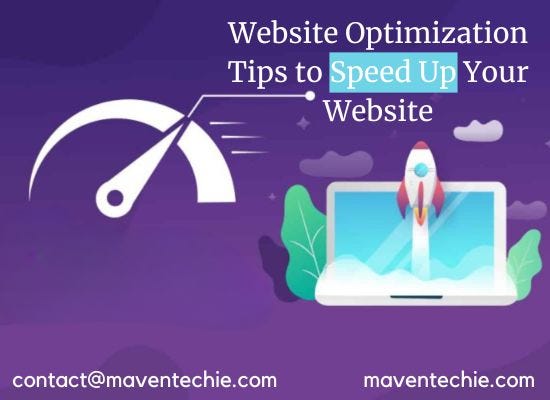
In today’s fast-paced world, website optimization is paramount. No matter how visually appealing or complicated your website is, if it takes too long to load, visitors will navigate away and damage your online reputation.
A slow website loading speed not only frustrates users but also hampers your business growth and online presence. It can lead to a high bounce rate, lower search engine rankings, negative business perceptions, and even a loss in conversions.
Over the proper Website Optimization Strategy! We know the importance of a fast-loading website for delivering a seamless user experience and maximizing conversions. An expert website optimization technique will not only optimize website speed & performance but also influence the audience to stay and attract & converts.
By following our proven tips, you’ll ensure that visitors stay engaged on your site, leading to higher customer satisfaction and increased sales.

Why Is Optimizing Website Speed Important?
Faster websites = more conversions + happier customers + bigger conversion rates.
Your website’s speed should be optimized to load between 0.3 to 3 seconds.
- The faster your website loads, the more visitors will stay on your site and spend more time there.
- If you have a site that takes too long to load, you’re losing money!
- Improved webpage speed has lower bounce rates.
- A slow website has a lower user experience.
- Don’t bother with slow websites. Speed is the key to keeping your visitors happy, and it costs you nothing but seconds of lost time.
- Faster websites have better rankings in search engines, resulting in more traffic and more sales.
We all know that speed matters for business success. To increase web page load speed, optimize website speed according to the standard times like loading time between 0.3 to 3 seconds.

Best Website Optimization Tips to Speed Up Your Website :
Your business can be affected by several consequences, as you have witnessed. However, you can enhance your website’s performance in multiple ways. Here are some examples :
Eliminate Unnecessary HTTP Requests :
This is the first step to optimizing your site. Make sure you’ve removed all unnecessary images, JavaScript files, CSS & XSL files, and fonts.
Each HTTP requests predominantly uses HTTP/1.1, which slows down the connection between the browser and the web server.
The benefits of monitoring and Optimizing HTTP requests can save you time and money by preventing slow pages from being displayed.
In a fast-paced world, it’s important to keep your users happy.
With Maven technology, you can see HTTP requests and resources that are taking too long to load and fix them immediately.
Using HTTP/2 :
HTTP/2 is the latest version of HTTP, which helps to reduce the number of requests.
HTTP/2 provides multiple benefits over HTTP/1.1, namely: support for multiple files, with fewer requests and higher throughput. That helps to optimize website speed faster.
It was standardized in 2015 (September 22) and has been adopted by the vast majority of websites. One advantage of HTTP/2 over HTTP/1.1 is that it allows each web request to span multiple files.
Make your optimize website faster by switching to HTTP/2. This will curtail protocol response through the browser to communicate with a web server.
Image Optimizations :
To optimize the performance of your website, you need to compress images. Remember wasting bandwidth time could increase the load time for your websites.
Here few things to keep it while building your website ;
- High-quality photos are critical for a successful website. Only use JPEG or PNG images.
- Use the correct file type! Use PNG files with simpler graphics.
- Use compression and resolution wisely!
Use Cache for Your Website :
Caching your web pages can help with lowering Time to First Byte (TTFB), by directing the server to use rarer resources to load a page.
You can do this at the server level, meaning that your host handles it for you. This way you won’t have to worry about serving up files, or have to worry about it impacting the speed of your site.
Accept a Content Delivery Network :
There are different aspects to cache your website’s pages. You can do this at the server level, meaning that your host handles it for you. Or you can go for a Content Delivery Network or CDN.
CDNs will optimize the delivery of static files such as CSS, images, fonts, and JavaScript to your visitors. Setting them up is usually very simple but there are some gotchas in their usage.


























